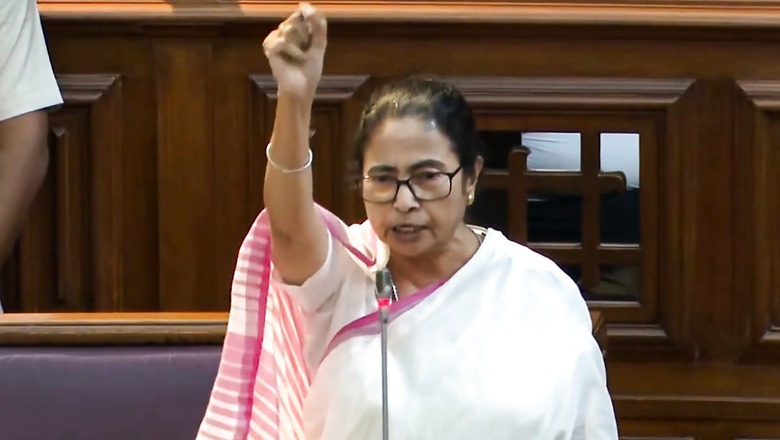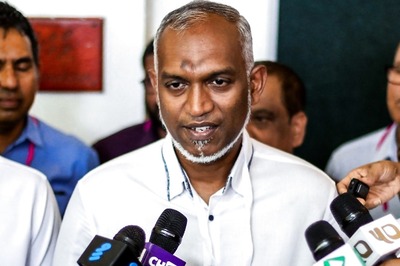
views
The past three weeks have seen a series of hits and misses on the part of West Bengal police, state government and the ruling Trinamool Congress in the aftermath of the doctor’s rape and murder. With the new anti-rape law, several questions have come to the fore – Where did her government falter and where did she score? Why is the tough anti-rape law bill, brought on Tuesday, not resonating with the protesters? And, why did the chief minister’s fiery speech at Bengal assembly did not change anything?
While the swift arrest by Kolkata Police was a commendable move, it failed to quell public outrage. People got fixated over an idea that there was a systemic cover up. The theory of a “cover-up” has taken such deep root and is now so well-entrenched in the public psyche, that the call for “justice” — driven by this very notion — has been steadily gathering steam, cutting across all sections, professions, and age groups in society.
One Triumph, Many Traps
Several lapses by the Kolkata Police may have fuelled this perception. However, these missteps are more about systemic flaws in the criminal justice system than some deliberate wrongdoing. But, these common lapses, which have now become glaring and are spread across social media platforms, have almost eroded public trust, leaving the police in the state battling widespread scepticism.
Take, for instance, the handling of the General Diary Entry (GDE) and the initiation of an Unnatural Death (UD) case. The first GDE was registered at Tala Police Station around 10:10 am when the initial call was received. The officer, who left for the scene of crime then, returned late at night at the police station after all the procedures, and wrote the day’s report, but made it the part of the GDE. The report, when picked up by the counsels, was shown as a GDE entry, only recorded after 13 hours of the incident. The Supreme Court was also shocked by such a lapse. However, in reality, it was lack of professionalism in that specific officer and it is nothing unique for such thana level officers. While this might seem routine, it’s emblematic of the procedural gaps that have amplified the belief in a cover-up, causing public confidence in the police to crumble.
Second and one of the crucial lapses include the alleged alteration of the crime scene. Even the pictures, available on social media, show over a dozen persons at the crime scene, while the crime scene didn’t look secured with tape or other demarcations. Even though the Kolkata Police identified the persons as people related to investigations, the protesting doctors came up with names of those who were not related to any investigation. Even if it was not directly affecting the investigation process, it added fodder to the theory of crime scene manipulation and hence, the ‘cover up’.
Third, and another pivotal point about an alleged cover up stemmed from the recorded time of lodging an FIR. The hospital authority gave an intimation note to the police station stating discovery of a ‘half naked body’, but the authorities did not lodge an FIR. In this case, the police, instead of lodging a suo moto FIR immediately, waited for the post mortem to be concluded as demanded by the parents of the victim.
According to a hand written note, signed by the parents and four colleagues of the victim, there were some demands made out before conducting the autopsy. They had listed the demands including videography, photography, presence of magistrate and presence of two experts from the hospital. By that time, it was late and the protests outside had already begun. After completion of the autopsy, the FIR was lodged. However, the officer on duty committed faux pas there too. He wrote in the content – ‘willful rape and murder’ – while it should have been written – ‘rape and wilful’ murder.
Fourt, with Kolkata Police initially tight-lipped and non-reactive to some ‘fake narratives’ , the theory of gangrape and ‘150 mg semen found on body’ spread. People, who are generally not so conversant of PM reports, crime scenes, and investigation of rapes, started saying that this (the crime) was not one person’s work. Some doctors contributed to such misconceptions.
Among all such major deviations, and disturbing narratives, the Kolkata Police did investigate the case properly, arrested the accused in 12 hours. As of now, while the CBI is now on the job, no fact otherwise has officially come out. In fact, the CBI has been seemingly following the same line of investigation, taken by the Kolkata Police. The probe and the arrest have actually been a triumph for Kolkata Police. However, the traps overshadowed the triumph.
Where did the CM stumble?
The protests persist, fuelled by perceived lapses in governance, allegations of lack of safety for women, and a growing distrust in the administration. Mamata’s aggressive posturing against the Centre, instead of addressing local grievances and talking in an emphatic way, has only intensified the unrest, leaving the fire of protest far from extinguished. The government’s missteps began with the ill-judged decision to transfer ex-principal Sandip Ghosh to a higher-ranked college instead of placing him on leave or suspending him.
As the incident occurred within the hospital premises, Ghosh should have been subject to scrutiny, but this move only raised suspicions. The action by the Chief Minister emboldened the ‘cover up’ narrative.
Next, the government’s failure to immediately order an inquiry into the recruitment and role of the civic police volunteer accused of the crime was a glaring oversight. The civic police volunteer force should have been thoroughly vetted and reformed, yet no such action was taken. There was no formal probe ordered.
The final blow to the police administration’s credibility came on August 14, when they failed to secure the hospital during the night march. The police couldn’t protect the protesting doctors or the hostel residents, leading to the hospital being vandalised. While some arrests were made, the authorities failed to clarify the motives behind the ransacking, deepening public mistrust.
To make matters worse, statements from senior Trinamool leaders, including the Chief Minister, only fuelled public outrage. Artists who supported the doctors and joined the protests were targeted and humiliated, further souring public perception.
Views expressed in the above piece are personal and solely that of the author. They do not necessarily reflect News18’s views.

















Comments
0 comment